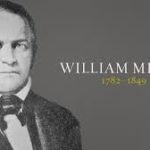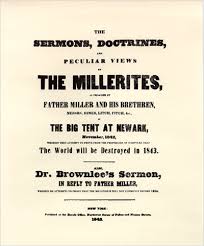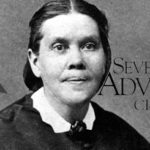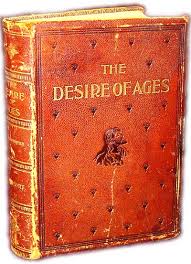
Adventism has a long history but modern Adventism has it’s roots in the work of Baptist pastor William Miller who prophesied that Christ would return on 1844.
Shortly after his marriage in 1803, Miller rejected his Baptist heritage and became a Deist, influenced by serious-minded local men who put into his hands works by, Voltaire, David Hume, Thomas Paine, Ethan Allen, and other deistic writers. The Deist view is of a distant God unconcerned with human affairs but a personal experience the war of 1812 was to challenge this view.
During one conflict at the Battle of Plattsburgh, in 1814, he described shrapnel shells falling as thick as hailstones. It was during this onslaught, that one shot exploded two feet from him, wounding three of his men, killing another, but leaving Miller alive and untouched.
Miller was persuaded that this, and the victorious outcome for the US forces, was miraculous. His deistic view of a distant God far removed from human affairs was shattered. He later wrote:
‘It seemed to me that the Supreme Being must have watched over the interests of this country in an especial manner, and delivered us from the hands of our enemies… So surprising a result, against such odds, did seem to me like the work of a mightier power than man.’
Miller returned to his family and, eventually, his Baptist faith. This change of heart did not, however, go unchallenged. His Deist friends insisted he should justify his move back to a belief in a personal God involved in the daily affairs of men.
He determined to meet the challenge, setting himself the task of closely examining the Bible, verse-by-verse, starting at Genesis 1. It was in this process he finally became convinced of two things, that post-millennialism was unbiblical, and that the time of Christ’s Second Advent was revealed in prophecy.
He began his calculations in Daniel 8:14, ”unto two thousand and three hundred days; then shall the sanctuary be cleansed” (KJV). Using the interpretive principle of a day being equal to a year, he calculated the 2,300 days/years from 457BC and the decree to rebuild Jerusalem given by Ataxerxes I. That period would end in 1843.
The cleansing of the sanctuary he interpreted to mean the purification of the earth at Christ’s Second Coming. By 1822 he was confident enough to publish his conclusion. It was in 1831 he began to give public lectures.
It was in 1831 he began to give public lectures.
From 1832 to 1834 Miller published letters and articles sharing his research into Adventism. The interest in his theories became so overwhelming that he published a synopsis of his teachings in a 64- page tract explaining his conclusions. (Evidence from Scripture and History of the Second Coming of Christ, about the Year 1844: Exhibited in a Course of Lectures.)
In 1840 a bi-weekly newspaper, Signs of the Times, was established to publish his work promoting Adventism. His writings had captivated so many that followers of his teachings were referred to collectively as the Millerites. If you lived in the United States in the 1840s you knew about the Millerites.
Miller never set an exact date for the Second Coming. He did narrow the time-period to sometime between March 21, 1843, and March 21, 1844.
When March 21, 1844, came and went he amended the date suggesting that April 18, 1844 could be the date. Again, April 18, 1844 came and went without incident and Miller responded publicly, writing, “I confess my error, and acknowledge my disappointment; yet I still believe that the day of the Lord is near, even at the door.”
It was actually a man named Samuel S. Snow, a peculiar character who rode about the countryside in a long white robe, calling himself Elijah, who set a date. Snow set an exact date, saying that Christ would return on October 22, 1844. This peculiar chronology was held by an obscure sect of Karaite Jews, whose calendar is different from the Rabbinic calendar.
People abandoned their farms and cattle, closed up their businesses, quit their jobs, and even threw their money away so sure were they of Christ’s return. Adventism had far reaching consequences, and still does today.
Of course, that date passed without incident and many thousands of Millerites, who had stayed up all night waiting for Christ’s return, found themselves gravely disappointed. Ever since then October 22 is known and marked among Adventists as the Great Disappointment.
Seventh-Day Adventists and the ‘Spirit of Prophecy’

Ellen G White
Adventism split broadly into two groups. The Open-Door Adventists continued to set dates, trust and preach prophecy, and preach the imminent return of Christ. The Shut-Door movement redefined the key date, teaching that October 22 had marked a turning point and the opportunity for repentance was passed.
No more outreach work was to be done for unbelievers. Confirming the ‘Shut Door movement,’ the young prophetess predicted Christ’s coming in the immediate future, although no date was set. Thus a long and controversial role as final arbiter of truth in the SDA Church began.
Christ’s failure to return immediately led to the Sanctuary Doctrine. Hiram Edson, a leader in the Shut Door movement, explained it had been impressed upon him that October 22 marked the transfer of Christ, our Great High Priest, from the Holy to the Most Holy Place, modelled on the Old Testament temple practice of the high priest going from the Holy Place to the Holy of Holies once a year on the Day of Atonement.
It is here Christ commenced his final atonement for sinners. In light of this new teaching, the movement began active mission work in the world for the first time.
Like Joseph Smith before her, Ellen G White pronounced, through visions and prophecy, on a whole range of issues facing a growing group of followers. She taught health reform, teaching Old Testament dietary laws as binding and declaring vegetarianism as spiritually preferred. She called for couples to remain celibate and, in light of Christ’s imminent return, avoid establishing families. She also took up the wildly popular 19th century temperance doctrine, as had Joseph Smith before her.
A classic sign of a cult is the adding of an authority to that of the Bible. For Jehovah’s Witnesses it is the authority of the organisation and it’s governing body, expressed through their official books and journals. For Mormons it is the adding of ‘scripture’ in the Book of Mormon and other volumes, and the claim to living prophets as final arbiters in all things pertaining to faith.
SDAs will claim their theology is based entirely on the Bible, giving the impression they hold to a Sola Scriptura doctrine. Yet, like other movements, they cannot bring themselves to admit their prophet’s teachings are less than Scripture. They defend vehemently Mrs White’s role as a ‘Messenger of God.’ The Review and Herald, an official SDA publication, in 1928 carried the following:
‘Seventh-day Adventists hold that Ellen G White performed the works of a true prophet during seventy years of her public ministry. As Samuel was a prophet, as Jeremiah was a prophet, as John the Baptist was a prophet, so we believe that Mrs White was a prophet to the church of Christ today.’ (Review and Herald, 4 Oct.1948, p.11, quoted in Seventh-Day Adventists, False Prophets? by Wallace D Slattery)
In the latest edition of the official ‘Biblical Exposition of Fundamental Doctrine’, Seventh-Day Adventists Believe, they say of Ellen G White:
‘One of the Gifts of the Holy Spirit is prophecy. This gift is an identifying mark of the remnant church and was manifested in the ministry of Ellen G White – the Lord’s messenger. Her writings are a continuing and authoritative source of truth which provide for the church comfort, guidance, instruction and correction. They also make clear that the Bible is the standard by which all teaching and experience must be tested.’ (Chap.18, The Gift of Prophecy)
In a convoluted argument, from the experience of Jehoshaphat and Jahaziel in 2 Chronicles 20, through Pentecost and an appeal to latter-rain doctrine, to Second Advent eschatology, they signal that they see themselves as the ‘Remnant Church,’ and Ellen G White as the prophet of the last days, the Spirit of Prophecy of Rev.19:10. (Seventh-Day Adventists Believe, 2nd. ed. 2005, pp 247-253)
G A Irwin, a former president of the Adventists General Conference, wrote:
‘It is from the standpoint of light that has come through the Spirit of Prophecy that the question will be considered, believing as we do that the Spirit of Prophecy is the only infallible interpreter of Bible principles, since it is Christ through this agency giving the real meaning of his own word.’ (The Mark of the Beast, 1926, p.1, quoted in Slattery)
Modern Adventists may well make clear, ‘that the Bible is the standard by which all teaching and experience must be tested.’ but it is equally clear it is the Bible as interpreted through Mrs White’s teachings that is ‘the standard by which all teaching and experience must be tested.’
Remember, Ellen G White, as the Spirit of Prophecy, is regarded as, ‘the only infallible interpreter of Bible principles.’ While Evangelical leaders and believers reserve infallibility for God’s Word in the Bible, SDAs typically regard Mrs White’s interpretations as infallible. So did Mrs White contradict the Bible? We will look at three issues:
1. The identity of Jesus.
2 The purpose of the atonement.
3 The life of the believer.
Is Jesus Michael?
 Ellen G White, like Jehovah’s Witnesses, taught that Jesus was Michael the archangel:
Ellen G White, like Jehovah’s Witnesses, taught that Jesus was Michael the archangel:
‘The words of the angel, “I am Gabriel, that stand in the presence of God,” show that he holds a position of high honor in the heavenly courts. When he came with a message to Daniel, he said, “There is none that holdeth with me in these things, but Michael [Christ] your Prince.” Dan. 10:21.’ (The Desire of Ages, p.99)
There is nothing in the Daniel texts used by SDAs or JWs to indicate that Michael is Christ, rather they bring the doctrine to the text. In Daniel 10:13 Michael is described as, ‘one of the chief princes,’ but Christ is never referred to as Chief Prince in the Bible. Indeed, John 3:16 describes Jesus as monogenes, unique, one of a kind, not one of many.
The Bible clearly distinguishes between angels, even archangels, and Christ. The writer to Hebrews asks, ‘To which of the angels did he ever say, ‘you are my son, today I have begotten you?’ (Heb.1:5) Every point you might want to make to a JW on this issue may equally be made to a SDA.
Did Christ’s Death Bring Salvation?
Ellen G White, as have Mormon leaders, taught a second chance, not a new life:
‘Death entered the world because of transgression. But Christ gave His life that man should have another trial. He did not die on the cross to abolish the law of God, but to secure for man a second probation.’ (Testimonies to Ministers, p.134)
This is a second chance salvation that places faith in a clean-slate humanity to pull itself up by its own bootstraps. The Bible, however, teaches salvation through Christ’s atoning sacrifice:
‘But God shows his love for us in that while we were still sinners, Christ died for us. Since, therefore, we have now been justified by his blood, much more shall we be saved by him from the wrath of God. For if while we were enemies we were reconciled to God by the death of his Son, much more, now that we are reconciled, shall we be saved by his life. More than that, we also rejoice in God through our Lord Jesus Christ, through whom we have now received reconciliation.’ (Ro.5:8-11, cf John 5:24)
In Christ, we are reconciled to God, not invited to reconcile ourselves to God.
Can the Christian Life be Sinless?
Ellen G White declared, ‘We must realize that through belief in him it is our privilege to be partakers of the divine nature, and so escape the corruption that is in the world through lust. Then we are cleansed from all sin, all defects of character. We need not retain one sinful propensity.’ (Review and Herald, April 24, 1900, p.6)
She also stated, ‘In order to let Jesus into our hearts, we must stop sinning. The only definition for sin that we have in the Bible is that it is the transgression of the law. The law is far-reaching in its claims, and we must bring our hearts into harmony with it.’ (The Signs of the Times, March 3, 1890)
This led to a perfectionist strand of Adventism in which men were so deluded as to claim to live sinless lives. This stands in stark contrast with what the Bible teaches:
‘If we say we have no sin, we deceive ourselves, and the truth is not in us. If we confess our sins, he is faithful and just to forgive us our sins and to cleanse us from all unrighteousness. If we say we have not sinned, we make him a liar, and his word is not in us.’ (1 John 1:8-10)
Conclusion
An earnest desire to see the coming of Christ led to the age-old folly of date setting and, as so many before him, William Miller got it wrong. The issue of this 19C Adventist mania has, however, spawned countless groups claiming to be the ‘Remnant Church,’ the Restored Church,’ the one true church etc. and millions have been driven by their own desire to see Christ’s return to investigate these groups. Disappointment soon follows though and lives are damaged, trust trust betrayed, and faith lost. The disappointment is great indeed, the damage far reaching.
‘But concerning that day and hour no one knows, not even the angels in heaven, nor the Son, but the father only.’ Mt.24:36
In Seventh-day Adventism, the largest of these groups today, we have a church that puts enormous trust in one they regard as God’s Messenger, the Spirit of Prophecy, who has proved to depart from the Bible when it comes to the identity of Jesus, his saving work, and the Christian life, as well as other key doctrines we will look at in the future.
It is a church that regards itself, exclusively, as the Remnant Church, the one true and faithful remnant of Christian believers, the one key player in God’s end-time plan. As we will see, they regard ‘other Christians’ as needing to come into line with SDA teaching in order to finally avoid judgement.
Does this help us decide if Seventh-day Adventists are ‘brothers’ in the faith?

